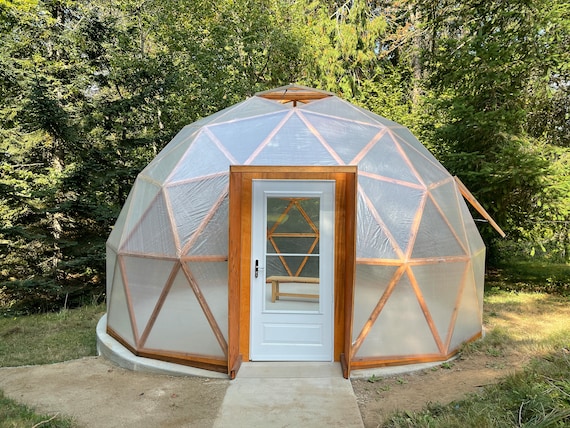
Image source: Google
Geodesic domes have captivated architects and designers with their unique aesthetics and structural efficiency. These modern architectural wonders offer a plethora of advantages that make them a compelling choice for various applications. Let's delve deeper into the world of geodesic domes and explore their potential in contemporary architecture.
The Origins of Geodesic Domes
Geodesic domes were popularized by the visionary architect and futurist, R. Buckminster Fuller, in the mid-20th century. Fuller's innovative design principles centered around maximizing strength and efficiency while minimizing materials and waste. The geodesic dome is a spherical or hemispherical structure composed of interconnected triangular elements. Its unique geometry distributes stress evenly throughout the structure, resulting in exceptional strength and stability.
Main Characteristics of Geodesic Domes:
- Triangulated network of struts
- Spherical or hemispherical shape
- Optimal strength-to-weight ratio
- Efficient use of materials
- Minimal waste in construction
Advantages of Geodesic Domes
Geodesic domes offer a wide range of benefits that make them a highly versatile architectural solution. Here are some of the key advantages:
Structural Strength and Stability
- Resistant to high winds and earthquakes
- Uniform distribution of stress
- Self-supporting structure
Energy Efficiency
- Natural ventilation and airflow
- Optimal use of natural light
- Reduced heating and cooling costs
Sustainability
- Minimal material waste in construction
- Long lifespan and durability
- Potential for off-grid living
Applications of Geodesic Domes
The versatility of geodesic domes allows for a wide range of applications across various industries. Here are some of the most common uses of these architectural marvels:
Residential Dwellings
- Unique and futuristic homes
- Cost-effective and energy-efficient housing solutions
- Off-grid living possibilities
Commercial Structures
- Event venues and exhibition spaces
- Greenhouses and botanical gardens
- Temporary shelters and disaster relief housing
Industrial Applications
- Storage facilities and warehouses
- Agricultural enclosures
- Water treatment plants
Future Prospects and Innovations
With advancements in materials science and construction techniques, geodesic domes continue to evolve and adapt to modern challenges. Here are some future prospects and innovations in the world of geodesic architecture:
Advanced Materials
- Use of sustainable and bio-based materials
- Integration of smart materials for enhanced performance
- Nanotechnology for self-healing structures
Technological Integration
- Integration of IoT for monitoring and control
- Solar panel integration for off-grid energy solutions
- 3D printing for rapid and cost-effective construction
Biophilic Design
- Integration of natural elements for improved well-being
- Living roofs and vertical gardens for enhanced aesthetics
- Incorporation of water features for a harmonious environment
Conclusion
Geodesic domes represent a modern architectural wonder that combines structural efficiency, sustainability, and versatility. From residential dwellings to commercial structures and industrial applications, the possibilities of geodesic domes are virtually endless. As we look towards the future, innovative materials, technologies, and design principles will continue to push the boundaries of geodesic architecture, unleashing its full potential in the built environment.